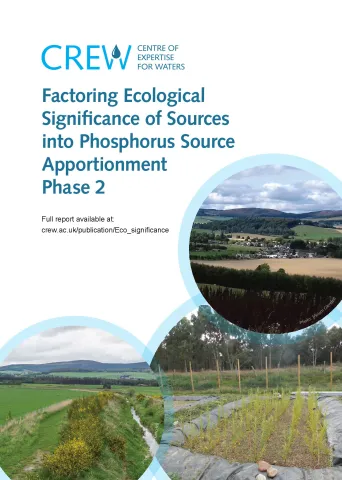Factoring ecological significance of sources into phosphorus source apportionment: Phase 2
Phosphorus (P) source apportionment is an important tool for prioritising mitigation strategies and assessing compliance as part of River Basin Management Planning process within the EU Water Framework Directive. However, the methodology for P source apportionment in rivers is subject to significant errors and uncertainty as annual total P loads are assumed to correlate with ecological impact, despite a wealth of evidence to demonstrate other factors such as seasonality and P bioavailability that affect the processes and mechanisms responsible for the transport of P from source to river systems (Stutter et al., 2014).
In 2014 CREW delivered a descriptive methodology of how modelled Total Phosphorus (TP) loads could be modified to take account of their impact on ecology (Phase 1). This project (Phase 2), evaluated the relevance of the method developed in Phase 1 to derive ‘ecologically significant source apportionment’ and examined potential factors affecting ecological status based on the regulatory data. Data from 45 Scottish streams were examined to identify a relationship between diatom response (a key ecological indicator for water body status) and other factors including: nutrients, soluble reactive phosphorus (SRP) loads from different sources, land cover proportions and hydrological catchment characteristics. The main findings and recommendations of Phase 2 are available below in the Executive Summary and Main Report.
| Attachment | Size |
|---|---|
| CRW2017_09 Executive Summary | 1.64 MB |
| CRW2017_09 Main Report | 1.66 MB |
